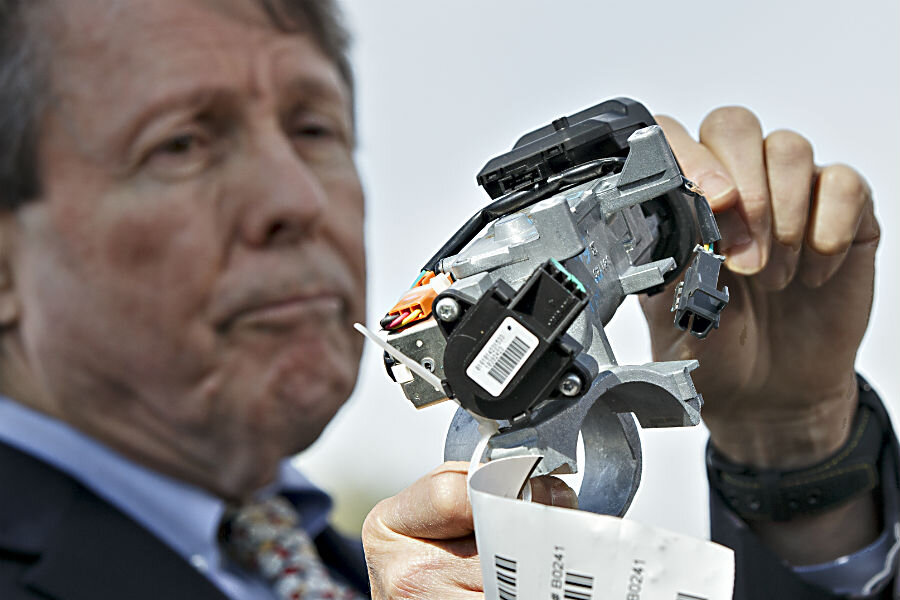GM ignition switch trial: Did President Obama protect the automaker?
Loading...
General Motors goes to trial Monday in a lawsuit over its 2014 recall of millions of vehicles – the latest development in the automaker’s long-running legal battle over faulty ignition switches.
The case comes as the company is celebrating a record sales year and President Obama is taking credit for saving the Detroit automaker from bankruptcy. But some have questioned whether the administration helped GM by slowing down the recall on the ignition switches.
The federal government’s $80 billion bailout of the auto industry, initiated during President George W. Bush’s presidency, has become a key element of Obama’s own administration. The bailout was a top issue during Obama’s re-election campaign, and he has since given hundreds of speeches that cite the initiative as an example of the difficult decisions that needed to be made to turn around the country’s economic situation, according to the Detroit News.
“Betting on you was the right thing to do… And that bet has paid off for America, because the American auto industry is back,” the president said at a speech in a Ford plant in Wayne, Mich., The Hill reported in January last year.
Following the government’s takeover of GM motors and other Detroit-based automakers, the National Highway Traffic Safety Administration (NHTSA) slapped Toyota with a record fine and demanded a recall of 9 million Toyota vehicles for problematic pedals.
But when evidence began to mount that GM vehicles – in particular the Chevy Cobalt – had issues related to sudden deceleration, the government was slower to respond, noted Liz Peek, a research analyst, in an opinion for The Fiscal Times.
“Why would the Obama administration sanction such a tough crackdown on Toyota, while leaving GM in peace? Certainly, the White House wanted GM to succeed,” Ms. Peek wrote. “Having forced through the bankruptcy of GM, under terms that many considered excessively generous to the UAW and unfair to creditors, President Obama had much on the line.”
The National Legal and Policy Center sought Congressional hearings into this issue.
In February 2014, GM recalled millions of vehicles related to faulty ignition switches – an issue, it turned out, it had known about for a decade. The switches tended to slip from the “on” position, which would cause the cars to stall, shut down power steering, and turn off airbags.
The company paid about $600 million to settle nearly 400 claims, covering 124 deaths and 275 injuries, according to figures GM released in December.
In May 2014, the NHTSA – citing the company’s failure to notify the government of safety defects within five days of learning about them – levied a record civil penalty of $35 million against GM. It said the company violated federal law when it failed to disclose to the government safety-related defects within five days of learning about them. GM also failed to respond in a timely manner to the government's requests for information during its investigation of the defective switches, the NHTSA said.
The case to be tried on Monday is the first of six bellwether trials around the faulty switches set for this year. In it, Robert S. Scheuer, of Tulsa, Okla., contends that a defective ignition switch prevented his airbags from activating during a crash.
The verdict could give a glimpse into the strengths of both sides' evidence as GM looks to wrap up the remaining switch litigation.
Material from the Associated Press was used in this report.








